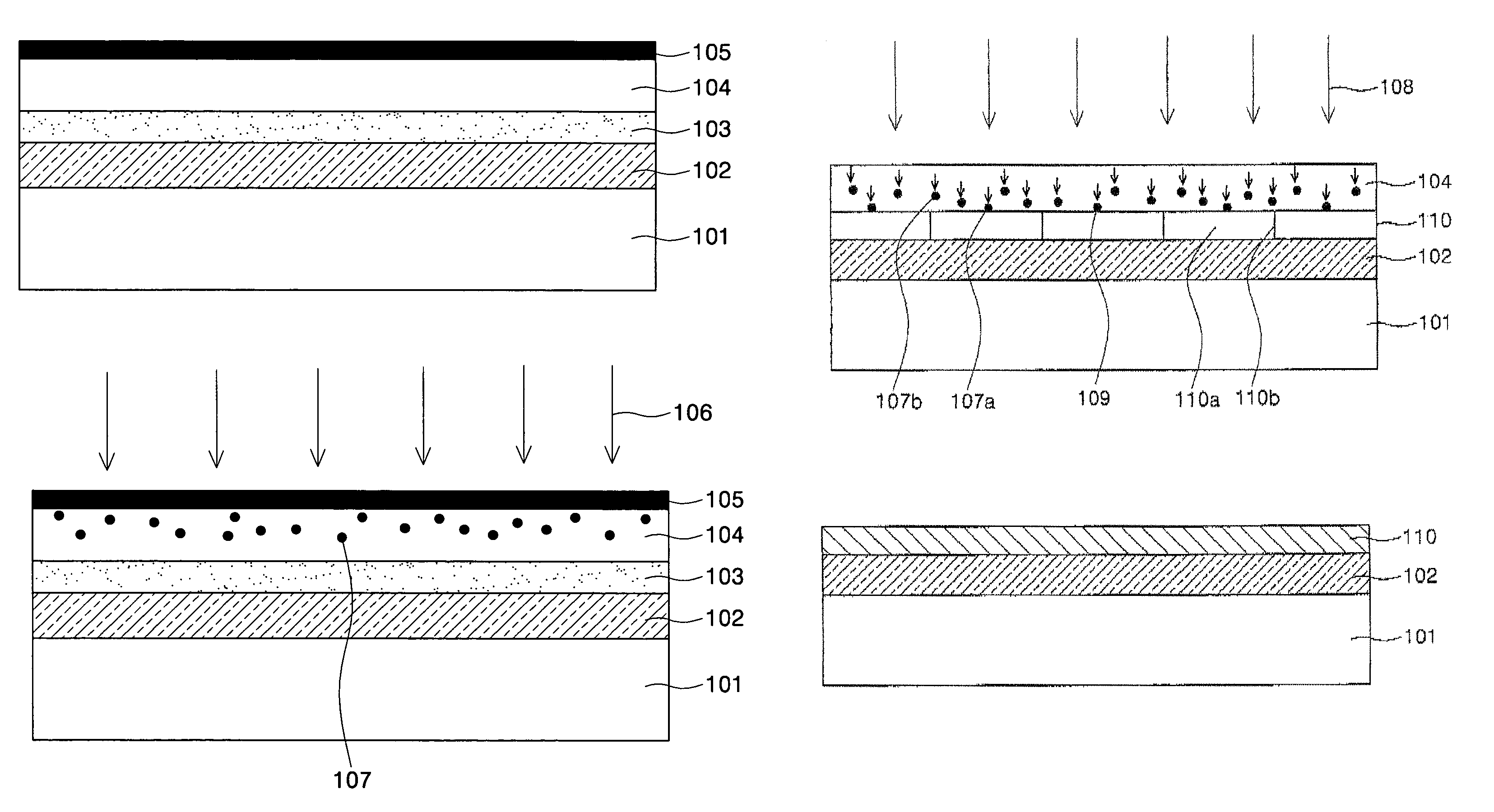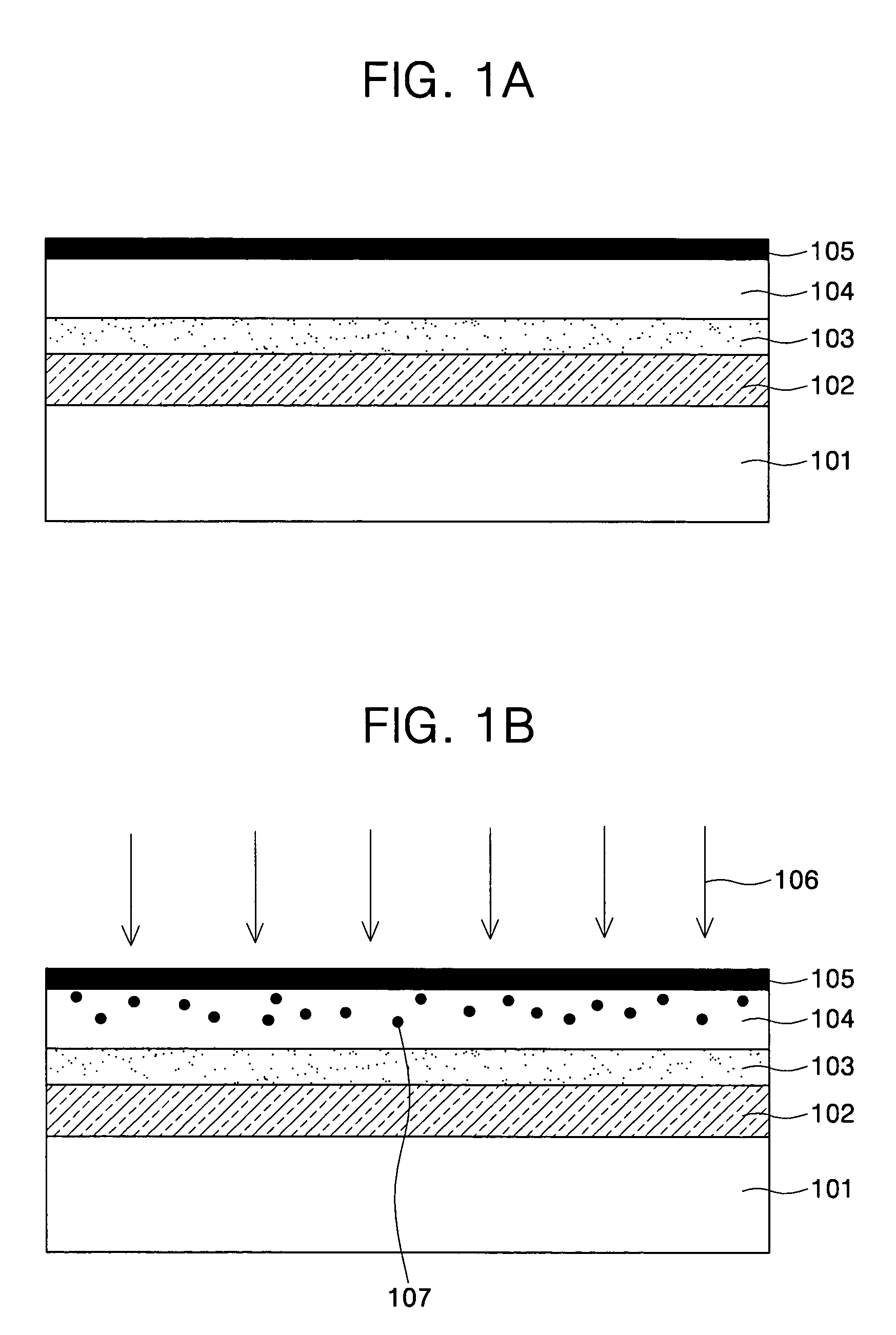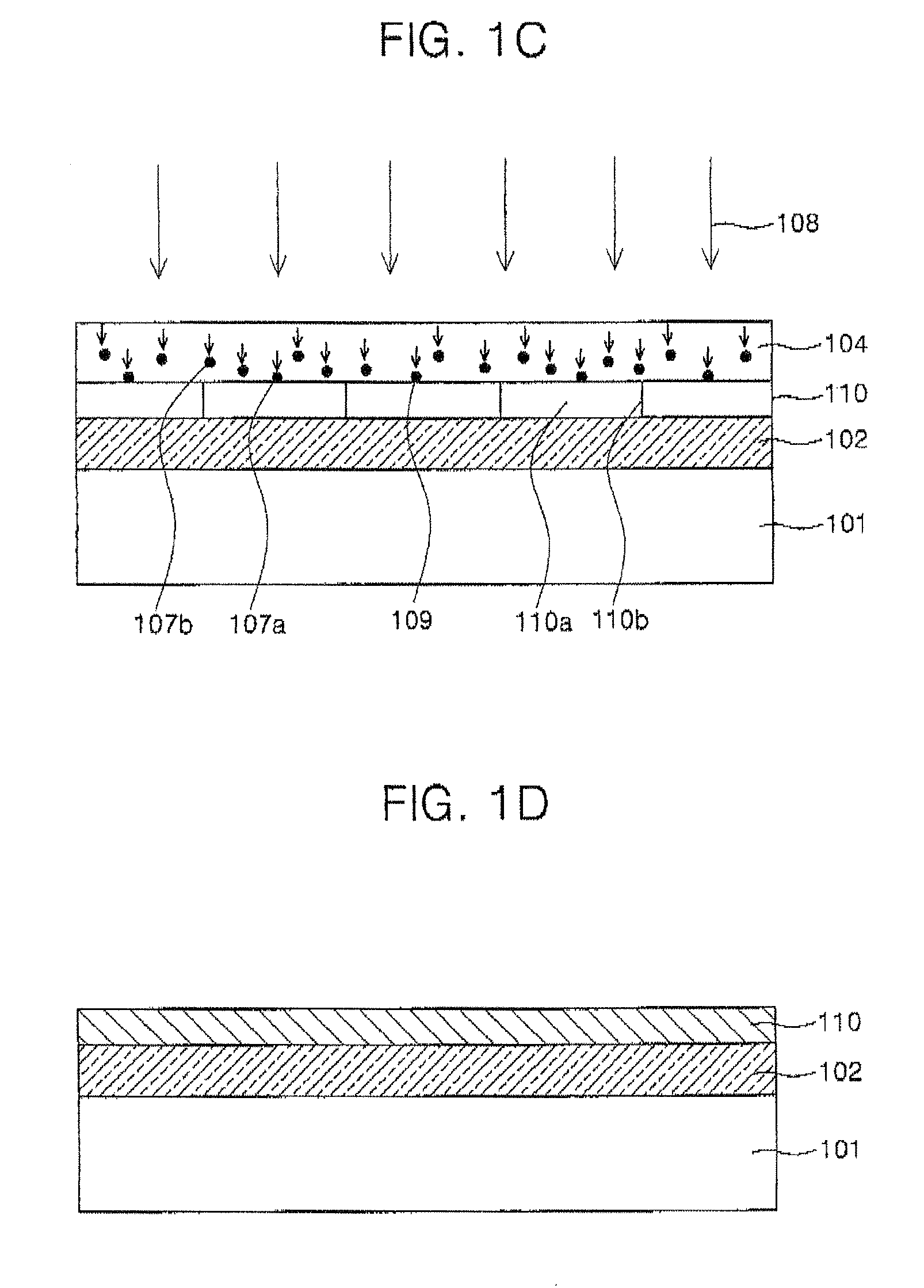Method of fabricating thin film transistor
a thin film transistor and fabrication method technology, applied in the direction of gel state, crystal growth process, polycrystalline material growth, etc., can solve the problems of low electron mobility of cvd method, easy deformation of substrate, and damage to silicon layer by contained hydrogen cracking
- Summary
- Abstract
- Description
- Claims
- Application Information
AI Technical Summary
Benefits of technology
Problems solved by technology
Method used
Image
Examples
Embodiment Construction
[0016]The present invention will now be described more fully hereinafter with reference to the accompanying drawings, in which exemplary embodiments of the invention are shown. In the drawings, the thickness of the layers and regions are exaggerated for clarity.
[0017]FIGS. 1A to 1D are cross-sectional views showing a process of crystallizing an amorphous silicon layer into a polycrystalline silicon layer according to the present invention.
[0018]FIG. 1A is a cross-sectional view showing a process of sequentially forming a buffer layer, an amorphous silicon layer, a capping layer and a metal catalyst layer on an insulating substrate. As shown in FIG. 1, a buffer layer 102 is formed on a transparent insulating substrate 101, such as glass or plastic, to prevent diffusion of moisture or impurities generated from the substrate or to adjust a heat transfer speed upon crystallization, such that a semiconductor layer is well crystallized.
[0019]An amorphous silicon layer 103 is then formed o...
PUM
| Property | Measurement | Unit |
|---|---|---|
| temperature | aaaaa | aaaaa |
| temperature | aaaaa | aaaaa |
| temperature | aaaaa | aaaaa |
Abstract
Description
Claims
Application Information
 Login to View More
Login to View More - R&D
- Intellectual Property
- Life Sciences
- Materials
- Tech Scout
- Unparalleled Data Quality
- Higher Quality Content
- 60% Fewer Hallucinations
Browse by: Latest US Patents, China's latest patents, Technical Efficacy Thesaurus, Application Domain, Technology Topic, Popular Technical Reports.
© 2025 PatSnap. All rights reserved.Legal|Privacy policy|Modern Slavery Act Transparency Statement|Sitemap|About US| Contact US: help@patsnap.com



